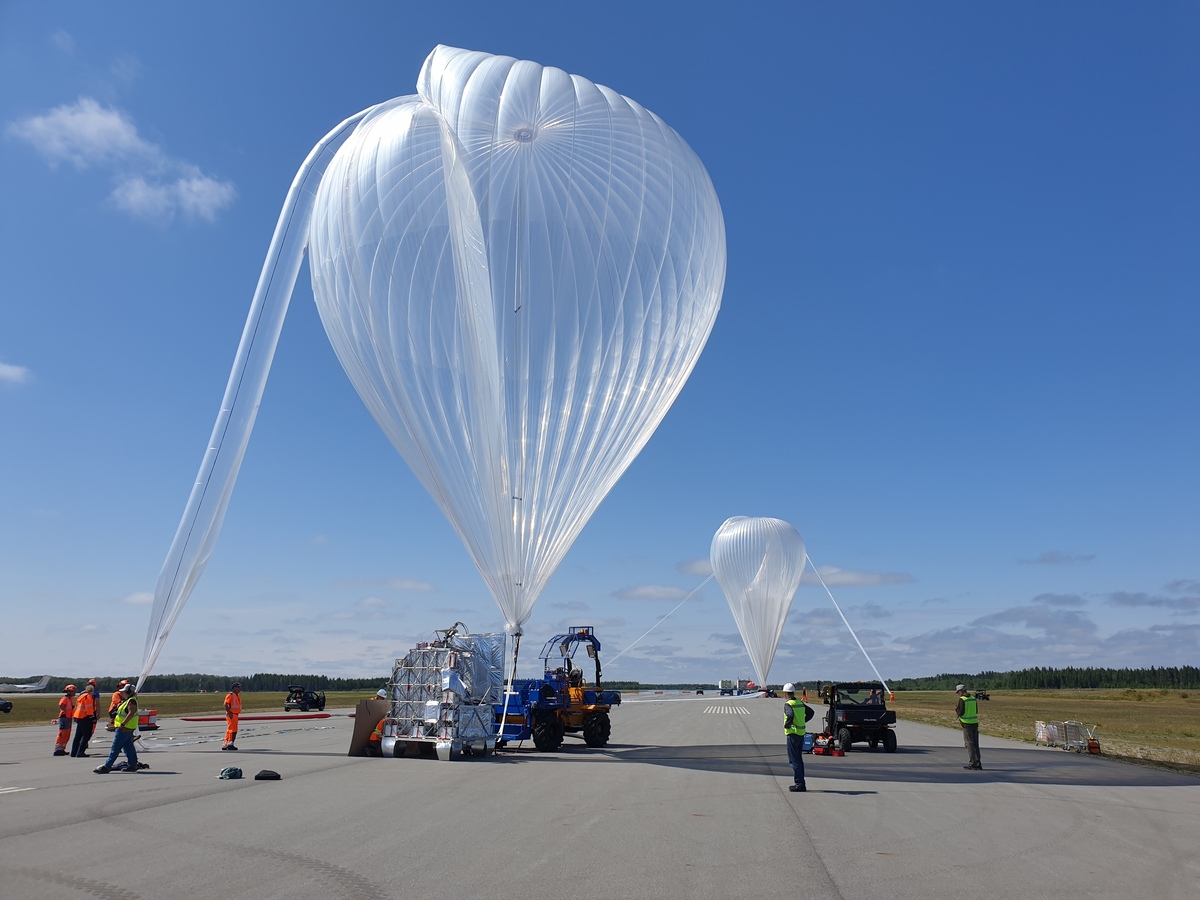Atmospheric Research: Stratospheric Balloon Launched in Canada
A large stratospheric balloon with the infrared imaging spectrometer GLORIA-B on board was successfully flown from Timmins, Canada on the 23/24th of August. The aim of the multifaceted mission by scientists from the Karlsruhe Institute of Technology (KIT) and Forschungszentrum Jülich (FZJ) is to measure the stratospheric composition to explore photochemical processes, high-reaching pollution from forest fires, as well as to support the European Space Agency ESA in preparing satellite missions such as the CAIRT and FORUM. After being launched by the team of the Centre National d'Études Spatiales (CNES) and the Canadian Space Agency (CSA), the balloon reached its maximum altitude of 36500 metres - and its full size with a diameter as large as a football field. The successful flight has been part of the European HEMERA Research Infrastructure within the Horizon 2020 framework and delivered high-quality composition information about the quiescent summer stratosphere.
Increasingly intense forest fires not only lead to problems with air quality at the lower levels but also influence atmospheric layers at altitudes of around 10 km and even up to 20 km – a region which is extremely important for the radiative balance of the atmosphere and, hence, climate change. With the versatile GLORIA-B spectrometer we are able to quantify the concentrations of a multitude of pollution trace species and aerosols and learn more about their effect on, e.g., ozone and radiation.
Even higher up, above 20 km altitude, bromine-, chlorine- and nitrate - containing molecules are measured by GLORIA-B as well. These substances are responsible for ozone depletion and due to international efforts to protect the ozone layer, their concentrations are currently changing. By influencing temperature and atmospheric dynamics, climate change plays an important role at these altitudes as well, due to a complex interplay of different processes. The GLORIA observations of more than 20 atmospheric parameters will help to evaluate processes in order to optimize model predictions of the ozone layer in a future climate.
GLORIA-B also serves as a precursor instrument of the satellite project CAIRT (Changing-Atmosphere Infra-Red Tomography Explorer), which was proposed to ESA by an international team led by the KIT Institute of Meteorology and Climate Research and was shortlisted for the Earth Explorer 11 mission last year. In addition, KIT and FZJ have proposed the ATMOSAT mission for the national roadmap. The GORIA-B data will help to demonstrate the technical feasibility as well as the measurement capabilities of the satellite instruments.
This flight extends the time series of measurements by IMK with specially developed infrared remote sensing spectrometers on stratospheric balloons and research aircraft, which began in the 1990s. Since then, 20 aircraft measurement campaigns and 26 large balloon launches have been carried out to investigate and document the chemical composition of the atmosphere under rapidly changing conditions due to climate change, especially in the difficult-to-access region of the upper atmosphere.
29.08.2022

